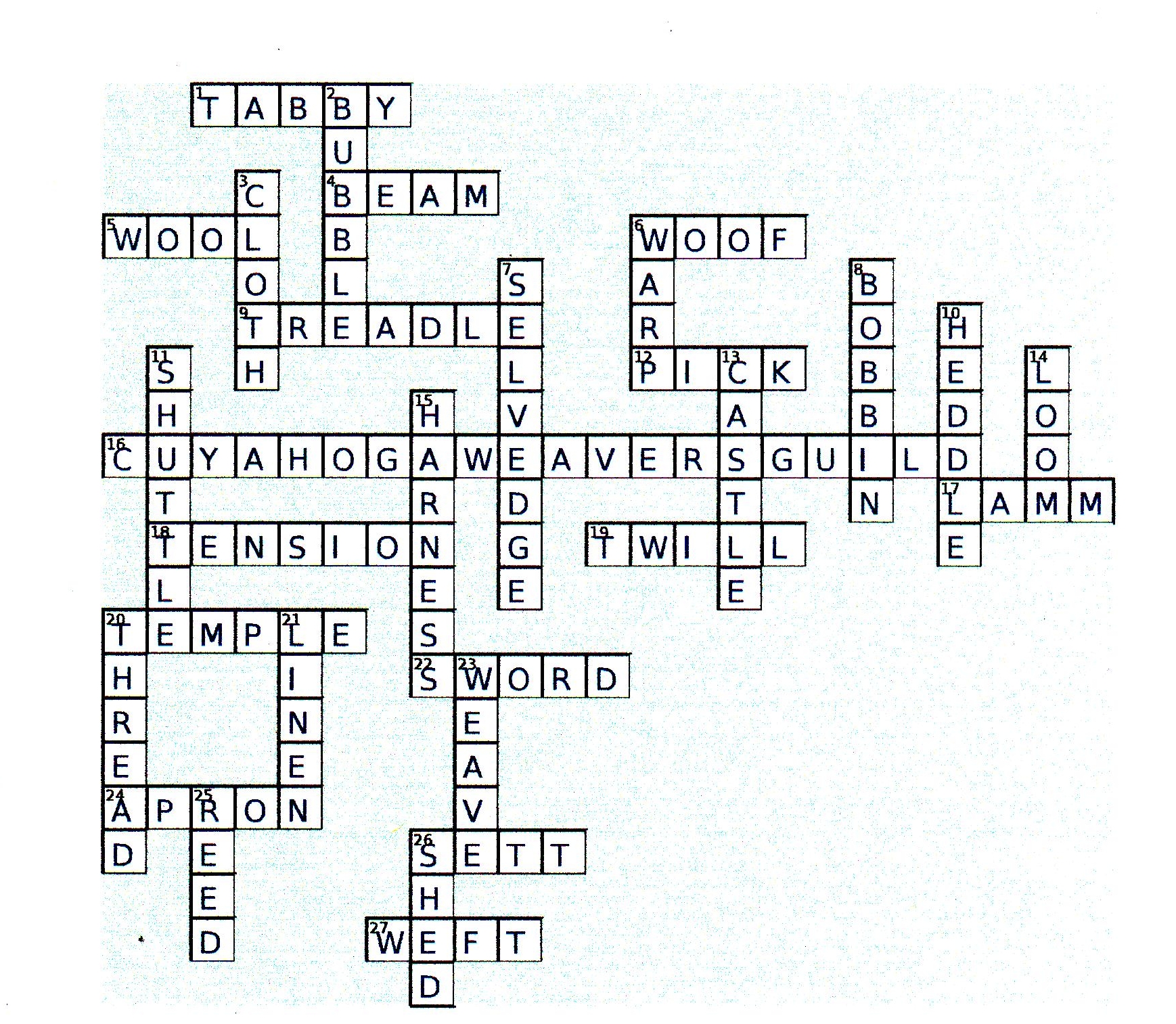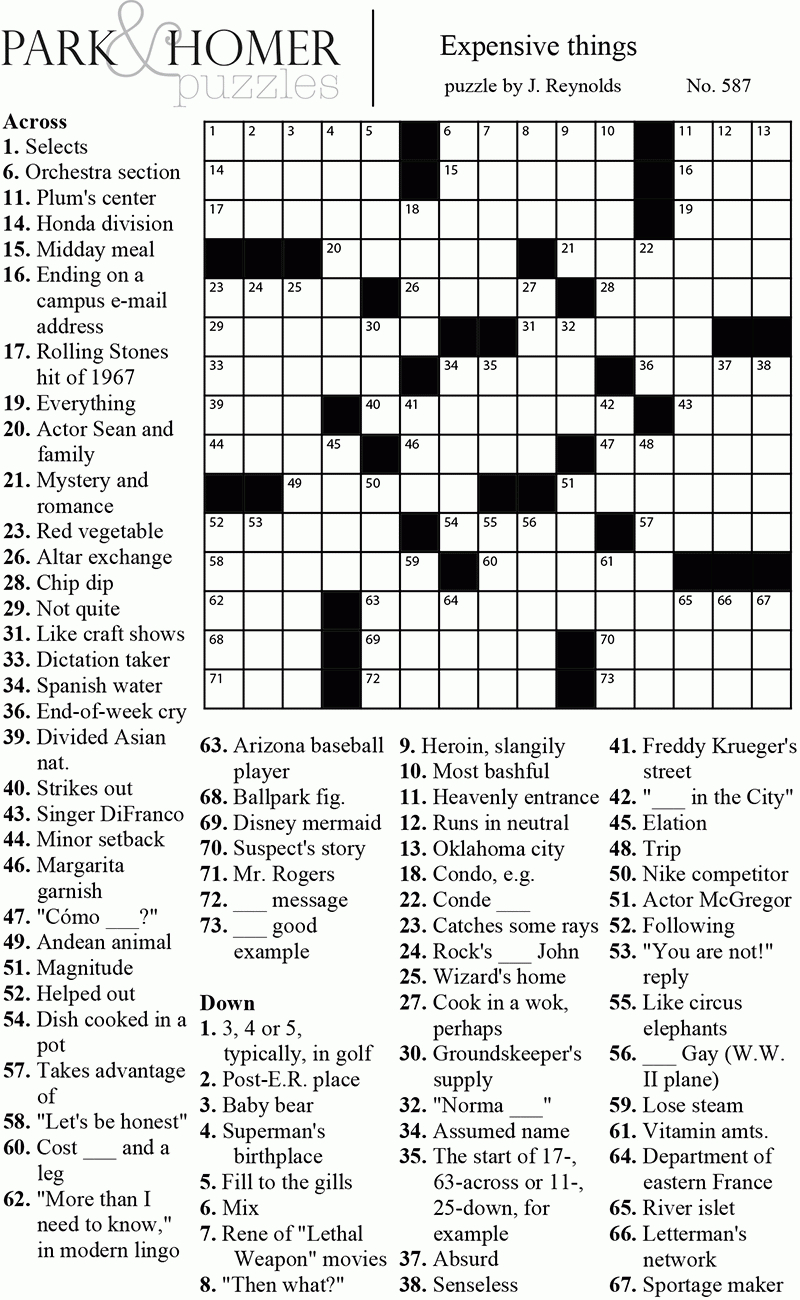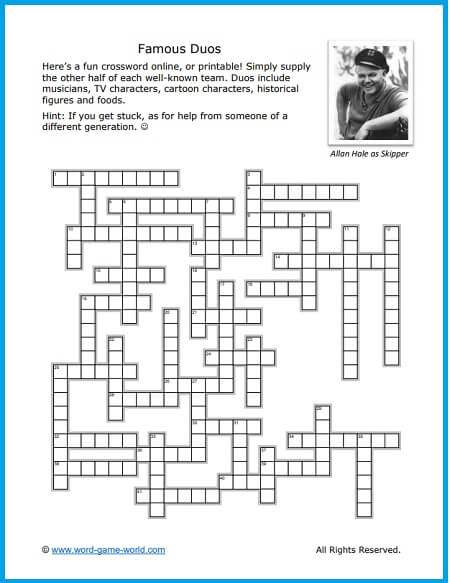

Crossword setters frequently refer to unchecked letters as unches.īecause of the symmetrical nature of the puzzle, the dimensions of British-style grids are odd numbers, the most popular being 13x13 and 15x15. British-style grids have a larger number of black squares, so that up to half of the letters in an answer are unchecked, ie, form part of either an across or a down answer, but not both. It is theoretically possible to complete this type of crossword by solving just the across clues while ignoring the down clues, or vice versa. The grid is usually square with some degree of symmetry, either rotational (so that the puzzle would look the same if turned 180 degrees) or mirrored (the bottom half of the puzzle is a reflection of the top, and/or the right half is a reflection of the left).Īmerican-style grids are heavily interlocking, with every answer letter checked, meaning that it forms part of both an across and a down answer. Due to a typesetting error occurring several weeks later at the newspaper, the words word and cross were transposed, giving the name crossword.Ī daily crossword is published in most English-language newspapers. He also used a diamond-shaped grid with a hollow centre, around which the answers were to be written, with numbers in the grid corresponding to those of the clues, indicating where and in which direction the answer should be placed. In Wynne's version, dubbed the word-cross, he provided a set of numbered clues to the words, instead of the words themselves. The puzzle was based on the word square, where a set of words of the same length was given to the solver, who then had to fit these words into a square grid so that the same words appeared both horizontally and vertically.

Some crosswords will also indicate the number of words in a given answer, should there be more than one.The first crossword was published in the 'New York World' newspaper on Decemby British journalist Arthur Wynne. At the end of the clue the total number of letters is sometimes given, depending on the style of puzzle and country of publication.

The clues are then referred to by these numbers and a direction, for example, "4-Across" or "20-Down". Squares in which answers begin are usually numbered. The shaded squares are used to separate the words or phrases. In languages that are written left-to-right, the answer words and phrases are placed in the grid from left to right and from top to bottom. The goal is to fill the white squares with letters, forming words or phrases, by solving clues which lead to the answers. And just for those who don't know, a A crossword is a word puzzle that normally takes the form of a square or a rectangular grid of white and shaded squares. These worksheets are fun, colorful, and educational. That's because our crossword puzzles quiz students on important vocabulary words. Best of all, they'll still be learning while they do them. This will give them a gentle break, allowing them to work together and relax. Pass these worksheets out to students between more difficult lessons. Crossword Puzzle Worksheets Terms of Use Not only are crossword Puzzles fun to complete, but they also provide for a great teaching opportunity.


 0 kommentar(er)
0 kommentar(er)
